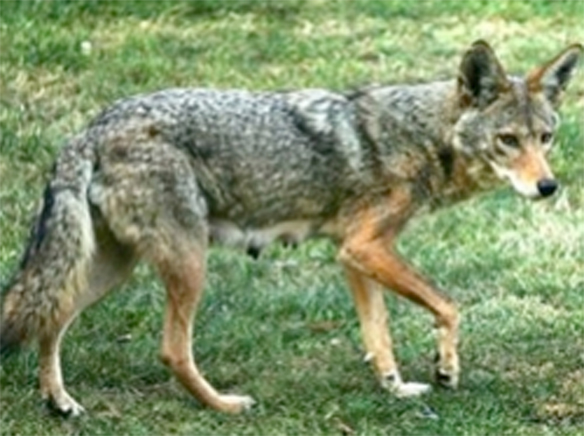A large and fiery crowd showed up for a community meeting in Cypress on Sept. 5 at the Cypress Community Center that was billed as a “Natural Disasters Safety Workshop,” but had a lot to do with coyotes.
Individuals who have lost pets to coyotes and have seen more of them this year than ever before, sometimes near schools where young children play, demanded that the city do something.
Many had pointed questions for Mayor Jon Peat, who was present, and accused him and the City Council of “not doing anything” and asked whether something catastrophic would need to happen for action to be taken.
The professionals, however, had an answer that was unsatisfactory to some but tempered and reliable.
Representatives from the California Department of Fish and Wildlife made the case that what Orange County needs is a long-term solution to its coyote problem. The fixes that people suggest, such as trap and euthanize or trap and relocate would not alleviate the problem, they said. They described a phenomenon that occurs when coyotes are aggressively controlled or euthanized in large numbers. The coyotes will overcompensate to replenish the population, by breeding earlier and having larger litters.
And if they are relocated, much like pets that get lost, they are capable of wandering large distances back to the area they are familiar with, since in the area of relocation they will not know where the sources of food and water are.
Even hazing—making yourself large and loud to frighten away a coyote if you encounter one, to discourage the brazen and unthreatened-by-people behavior many seem to have developed— which is often suggested as a useful method, they said would only maybe work on young coyotes.
They did, however, mention that if people are able to identify one problem coyote wreaking havoc on their property, they do not require any kind of permit to trap the coyote.
So what is the solution?
To not make your home or neighborhood a soft target. They strongly advised against leaving pets or pet food outside, and urged people to secure their trash.
The City of Anaheim and others have instituted a program called Wildlife Watch. It gets the community to join its efforts in getting educated and working together to take away coyote attractants and alter their behavior. Mayor Peat agreed to look into instituting Wildlife Watch for Cypress, and Buena Park Mayor Pro Tem Art Brown was also in attendance at the meeting, and at the next Buena Park City Council meeting, Brown made a point of bringing it up as something he would also like his city to look into.
But despite these efforts, many were still left frustrated and dissatisfied, with one attendee even vocalizing her displeasure and walking out.
Frustrated locals who have seen pets killed, and who worry about their children and grandchildren, want action now. But the experts say that the only effective solution is a long-term, slow and steady one.
Also discussed were mosquitoes and earthquake preparedness.
Lora Young of the Orange County Mosquito and Vector Control District (OCMVCD) presented on invasive mosquito species, and gave statistics on bugs in Buena Park this year, and described the studies that have been done in the area. Interesting facts that she shared included that mosquitoes are particularly drawn to indoor house plants, and bromeliads can be especially attractive to them. OCMVCD is funded by taxpayer money, so their services are free to residents. If concerned about mosquitoes or other pests, home visits can be requested at ocvector.org.
And Riverside City Councilman Mike Gardner, who also serves as Chair of the California Seismic Safety Commission, shared tips for preparing for earthquakes, including everything from bolstering buildings to always having food, water and cash on hand in case of any type of emergency.
The event was a community outreach put on by Assemblywoman Sharon Quirk-Silva. There was a standing-room-only crowd.
Practical tips for dealing with coyotes can be read at wildlife.ca.gov/keep-me-wild/coyote.

